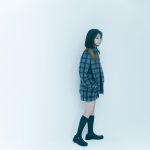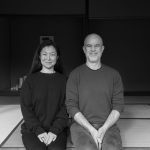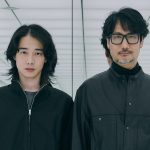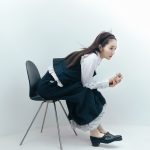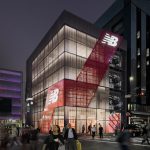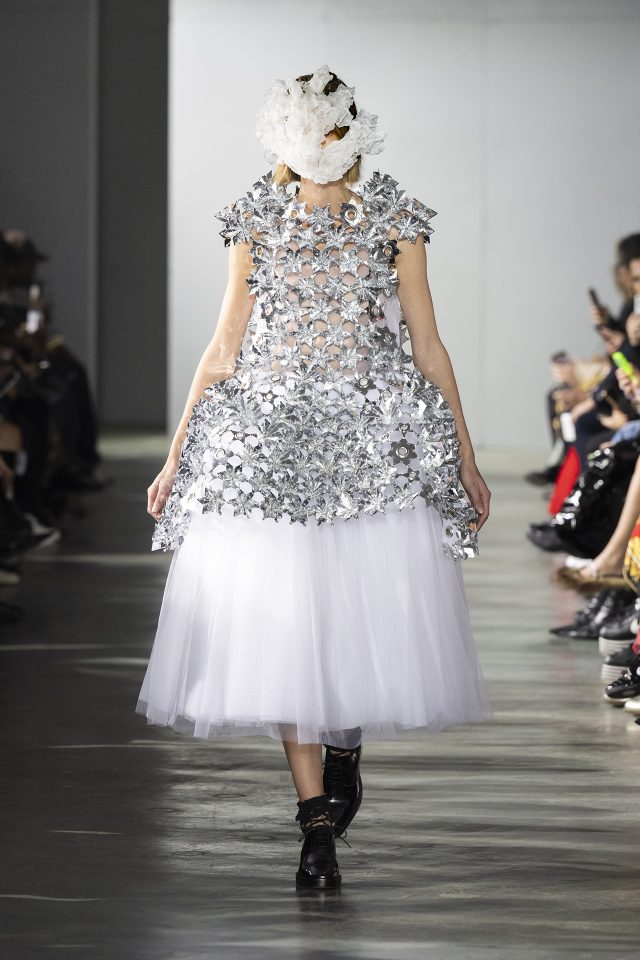C.E ディレクター、Toby Feltwell (トビー・フェルトウェル) インタビュー
Toby Feltwell
2011年の立ち上げから2年、トーキョーを代表するストリートウエアブランドへと成長を遂げた C.E (シーイー)。グラフィックデザイナーのSk8ightTing (スケートシング) がデザイナーを務める同ブランドにおいてディレクターを担当するのが Toby Feltwell (トビー・フェルトウェル) だ。音楽からはじまり法律を経由、その後ファションやビジネスにまで多岐にわたったワーキングヒストリーをもつ同氏は、C.E のディレクションを行いながら、現在も多数のブランドや人と関わり時代の傍観者とも言うべき俯瞰的目線から独自のコンサルティングをやってのける。謎に包まれてきたこれまでのキャリアから日本のファッション事情、今後の展望について話を聞くべく、お気に入りの場所としてあげてくれた神宮前に位置するカフェ、J-COOK にてインタビューを敢行した。
C.E ディレクター、Toby Feltwell (トビー・フェルトウェル) インタビュー
Portraits
*You’ll find the English text after the Japanese.
2011年の立ち上げから2年、トーキョーを代表するストリートウエアブランドへと成長を遂げた C.E (シーイー)。グラフィックデザイナーの Sk8ightTing (スケートシング) がデザイナーを務める同ブランドにおいてディレクターを担当するのが Toby Feltwell (トビー・フェルトウェル) だ。音楽からはじまり法律を経由、その後ファションやビジネスにまで多岐にわたったワーキングヒストリーをもつ同氏は、C.E のディレクションを行いながら、現在も多数のブランドや人と関わり時代の傍観者とも言うべき俯瞰的目線から独自のコンサルティングをやってのける。謎に包まれてきたこれまでのキャリアから日本のファッション事情、今後の展望について話を聞くべく、お気に入りの場所としてあげてくれた神宮前に位置するカフェ、J-COOK にてインタビューを敢行した。
—よろしくお願いします。まずは Toby さんの簡単なバックグラウンドを教えていただけますか?
僕はイギリス生まれで、13歳くらいからスケートボードをやっていたのですが、それを通して音楽と洋服に興味を持つようになりました。ロンドンから電車で40分ぐらいの所に住んでいました。だけど、ロンドンに住みたかったので大学は University of London に入学しました。でも勉強はあまりせずに、ロンドンの老舗スケートショップ SLAM CITY SKATES (スラム・シティ・スケート) に毎日行ってはハングアウトしていました。そこで色んな人に出会いました。昔、ロンドンでは日本のストリートウエアブランドは SLAM CITY SKATES でしか買えなかったんです。なので A BATHING APE® (ア ベイシング エイプ®) や GOODENOUGH (グッドイナフ) なんかは初期の頃から見ていました。大学を卒業する時、就職のことはまったく考えてなく SLAM CITY SKATES で出会った Will Bankhead (ウィル・バンクヘッド) というスケーターが Mo’Wax (モ・ワックス) というレコードレーベルの仕事を紹介してくれて、そこで働くことにしたんです。それから音楽の仕事を7年くらい。Mo’Wax はインディーズっぽく見えて、僕が入ったときには既に 米国の A&M Records のサブレーベルになっていて、その後 XL Recordings の傘下に入りました。働いていた Mo’Waxを通して NIGO® と知り合いました。
NIGO®との出会いとA BATHING APE®
—NIGO® 氏とは Mo’Wax で一緒に仕事をされたんですか?
僕は当時、MAJOR FORCE (*日本初のヒップホップを中心としたクラブミュージックレーベル) のメンバーでもあった、工藤昌之さんと中西俊夫さんと仲が良かったんです。たしか NIGO® は工藤さんが紹介してくれました。ちなみに Mo’Wax から NIGO® がアルバムをだしたことがあるのですが、そのプロデュースは NIGO® と工藤さんでした。その流れで僕は自然に NIGO® の A&R を担当することになります。Mo’Wax の元の事務所の地下には MAJOR FORCE のスタジオがあったんですが、そこで趣味の一環としてずっとレコーディングをしていたんです。NIGO® がイギリスに出張で来てはスタジオでトラックを取るというサイクルです。レコーディングを始めたのは1997年で、アルバムのリリースは1999年だったので、完成するまでけっこう時間がかかりましたね。
—NIGO® 氏と関わりを持つようになったのは1997年からなんですね。
そうですね。ロンドンで初めて会って、Mo’Wax が A BATHING APE® と近い関係になってから頻繁に。日本にはレーベルのファウンダー James Lavelle (ジェイムス・ラヴェル) とよく一緒に行っていました。7年も音楽の仕事をしていたので、少し面白みを感じなくなってきて、何か趣味が欲しいと思っていたら、たまたま僕が住んでいた家の近くに法律学校があったので夜間でその学校に通うことにしました。ただ、何も考えずに通い始めたわけではなくて、もともと興味はありました。音楽業界の中で弁護士は少しステータスとして高い職業だというのと、普通の人には分からない秘密がたくさんあって、それは勉強すれば分かるんじゃないかと思ったからです。その学校には4年間通いましたが、イギリスでは法律の試験にパスしてから2年間は法律の仕事をしないと免許がもらえない仕組みなんです。しかも、それは試験にパスしてから遅くても2年後までに始めないといけない。でも僕は4年間勉強してきたものの、これから本当に法律の仕事がしたいかどうかは分からなかった。正直な話、最初はただ知識を得たかっただけで、仕事にするかどうかは二の次でした。そして僕が法律学校を卒業する時には Mo’Wax は XL Recordings の傘下になっていました。そして XL Recordings の役員で法律の仕事をしている人に、弁護士になろうと思っていることを話したら、とても喜んでくれて、いい法律事務所を紹介してくれました。それで8ヶ月後に弁護士事務所で働くことが決まりました。弁護士事務所で働くまでの間、どうせ Mo’Wax の仕事を辞めなければいけないのであれば、早めにいまの仕事を辞めて日本に行ってみようと考えて、NIGO® に相談してみたら、こっちで何か一緒にやろうよ。というオファーをしてくれたんです。それが2003年くらいですね。
BILLIONAIRE BOYS CLUB (ビリオネア ボーイズ クラブ) の誕生エピソード
—それは A BATHING APE® でということでしょうか?
A BATHING APE® というか、運営会社の NOWHERE (ノーウェア) ですね。事務所に席を作ってくれたんですが、ほとんど毎日 NIGO® と一緒にハングアウトしていました。ちょうど NIGO® はこれからの展開を考えていた時期で、NY にショップを出したいという目標を持っていたので、そのプロジェクトを一緒に進めることになりました。と言いながらも僕は法律の仕事のスタートが決まっていたので8ヶ月くらいしか日本に滞在できなかったのですが。そして世界的に有名なミュージシャン兼プロデューサーの Pharrell Williams (ファレル・ウィリアムス) に会って、NIGO® と一緒にファッションブランド BILLIONAIRE BOYS CLUB (ビリオネア ボーイズ クラブ) を始めるという話が出たのも同じ時期です。
—Pharrell Williams 氏とはもともと知り合いだったんですか?
いえ、違います。まだ僕が Mo’Wax にいた頃、結局リリースされなかった『Headz 3』というコンピレーションに The Neptunes (ザ・ネプチューンズ) のインストゥルメンタルを入れたくて連絡を取ったことはありました。しかし、その時は本人とではなく N*E*R*D (エヌ・イー・アール・ディー) の契約していた Virgin Records (ヴァージン・レコード) の知り合いとやり取りをしていたので、直接話しをしたことはありませんでした。この時期に NIGO® と Pharrell Williams が出会ったのは偶然のようなものですが、絶対にどこかのタイミングで一緒に何かを始めるのではないかと漠然に思っていました。2人はセンスが近いので言葉の問題で直接は話ができなくても、大体は理解し合えていました。
—Toby さんが NIGO®氏 と Pharrell Williams 氏と二人を引き合わせたんですか?
引き合わせたわけではないです。僕はコミュニケーション面でのサポートをしていました。それは単なる通訳と言われてしまうかもしれないですが、通訳だと深いリレーションシップにまで発展しないですよね。言葉の壁や問題を気にしないでいいくらいのリレーションシップをうまくとれるようにサポートしていました。日本にいた8ヶ月の間に NY のお店がオープンする上で必要な準備を終わらせて、BILLIONAIRE BOYS CLUB をどういった形で進めるかというところまで話を進めることができました。そして NIGO® は NY でのビジネスや Pharrell Williams やいろいろな人と契約するにあたって弁護士が必要になったんです。それで僕がタイミングよく弁護士事務所に入ったので、そのポジションに就くことになりました。結局、弁護士事務所にはトレーニーとして働き初めて、すぐに日本やアメリカを行き来して、これまでの仕事の延長線上で弁護士としての仕事をすることになりました。弁護士事務所で働き始めて2年が経って、このままロンドンに残って法律の世界で生きていくか、日本に行ってこの流れをフォローするかという選択をしなければいけなくなりました。結果から言うと、日本に行くことになるのですが、法律もおもしろくなってきていたので、すぐに決断はできませんでした。ただ、日本に住んだ方がおもしろそうだったので、2006年に東京に移住しました。それで NOWHERE と立ち上げた BILLIONAIRE BOYS CLUB の会社の両方に所属しました。約2年くらい前までですね。
—NOWHERE ではどんな役職だったんですか?
僕が NOWHERE 入った当初は、堅い感じではなかったので肩書きは無かったです。あとから海外戦略事業部〜という長い名前の肩書きがつきました。でも、肩書きにあるようなことだけをやっていたわけじゃないので、企画部長代理なんかもやっていました。たしか BILLIONAIRE BOYS CLUB の会社での肩書きは副社長だったと思います。BILLIONAIRE BOYS CLUB は NOWHERE と比べてもっと小さな組織だったので、経営に加えて企画やデザインなどすべてを見ていました。その後アメリカの会社に BILLIONAIRE BOYS CLUB のライセンスを受け渡して、違うビジネススタイルで続けることを決定し、その手続きを進めました。それからすぐ NOWHERE を香港の I.T 社に売却しました。ある程度の段階までは僕はタッチしていなかったのですが、いざ契約というタイミングで関わることになりました。上場企業の I.T は香港で一番有名な法律事務所を使っていたので、同じレベルの法律事務所をこちらも立てなければいけない状況だったのですが、香港は基本的にイギリスの法律と一緒なので、イギリスの法律事務所で東京に支店のある Simmons & Simmons というところにお願いして、統括管理を僕がしていました。そして僕は NOWHERE を離れてシンちゃん(スケートシング) と菱山くんと一緒にストリートウエアブランド「C.E (シーイー)」を立ち上げました。
Sk8ightTing (スケートシング) との出会いとストリートウエアブランド「C.E 」
—スケートシング氏との出会いはいつ頃ですか?
ハッキリ覚えていないのですが、1997年から日本に行くようになったのと同じ時期だと思います。Mo’Wax でもシンちゃんにグラフィックを頼んでいましたし。それからいままでシンちゃんとはずっと仕事をしています。BILLIONAIRE BOYS CLUB ではライセンスを受け渡すまでの間、シンちゃんが全部のグラフィックを作っていましたし。最初につくったBILLIONAIRE BOYS CLUB のグラフィックは、僕が説明を受けてからシンちゃんにお願いしたのですが、シンちゃんはデザインをすぐその日に作ってくれたので、クラブでパフォーマンスしていた Pharrell Williams に DJ ブースの横ですぐ見せて、その場で OK をもらったのを覚えています。その僕がシンちゃんに伝えてグラフィックを作ってもらうというプロセスが BILLIONAIRE BOYS CLUB に関しては最初から最後まで続きました。
—法律からデザイン、コンサルティングまで。仕事の幅が広いですね。
そうですか?それはこれまでやってきたようなスケールだからできただけだと思います。大きなビジネスになると無理ですね。ピーク時の A BATHING APE® の売り上げはかなりありましたけど、人もそんなにいたわけではないですし。こういうビジネスであればできるかもしれないですけど、ほんとに大きな企業だと自由にやるというのは難しいかと思います。僕は1つのことだけをやっていると飽きてしまう人間なので、堅い仕事もやりつつというバランスが好きです。だからブランドを立ち上げるというのは自分には一番合っているのかもしれない。これまでは誰かの相談役のような立場が一番楽しいと思っていたので、自分で独立して全部に関わるようなことは考えもしなかったです。
—C.E における Toby さんの役割を教えてください。
名刺に肩書きは書いていませんが、ディレクターですね。ただ、シンちゃんと菱山くんとデザインをすることもあれば、経営を担当することもあります。戦略を考えるのは好きですし、ブランディングもやります。長い間ブランドについて勉強しているので。シンちゃんもブランドに関してはプロフェッショナルです。戦略を考えるのは僕の役目だと思っています。
—言える範囲で大丈夫なのですが、C.E のブランディングはどのようなものですか?
NOWHERE と BILLIONAIRE BOYS CLUB に所属していたとき、大きなブランドとも関わってきて、その経験でブランドについて考える機会がたくさんありました。その上で思うのが、「自分たちが何を作りたいか?」というのは基本的なスタートで、お客さんからブランドがどう見られるというのは自分たちではコントロールができないということ。なので、運営側のイメージと買い手側のイメージを含めた1つの出来事が「ブランド」だと僕は思っています。流行るかどうかというのは誰にも予測できないですし、いくら長い経験を積んでノウハウが完璧に分かっていたとしても、流行らないことはよくあることです。だからそれを分かった上でできるのは、自分たちがいいと思うモノ、強いと思うモノを作って、それをできるだけ多くの人が見られるような環境を整えるということです。それでどういうリアクションをされるかというのをただ見守るしかない。プランニングをして段階を踏んでから、ということは僕は信じていないです。やっぱり基本は自分たちのやりたいモノですから。やりたいモノがずっと芯にあって、それを続けることができれば可能性は生まれると思っています。
—C.E がやりたいコトを具体的に言うと?
それを口で説明できればブランドをやる意味はないんじゃないでしょうか?かなり抽象的でなにか掴めないムードを探しているようなものなので。ただ、具体的に簡単に言えるようなモノではないから良いのだと思います。さっきも言ったとおり、ブランドは受け取る側から見たものも含めた現象なので。でもクリエイターによっては、うちのブランドは君たちが考えているようなモノではないので、分かってない人は買わなくていい、というスタンスをとる人もいますよね。でも頭を柔らかくすれば、買ってくれる人たちが思う部分やアイデアすらも柔軟に受け入れて、常にウェルカムなスタンスですべてがブランドの一部だと考えることができると思うんです。C.E が自分たちのつくっている洋服だけで成り立っていると考えるのは、ブランドにとってあまりおもしろい考えではないですね。
うちのブランドはこういうモノですといくら言い続けても、ブランドのバックボーンを知らない人たちが急に好きになって爆発的に売れるとまったく違うルートに入りますよね。例えば、もともと STONE ISLAND (ストーン アイランド) はイタリアのハイテクカジュアルウエアでしたが、イギリスのサッカーフーリガンの制服として今では有名です。そういうことが面白いと作り手側の人たちが思えなければブランドが伸びないということです。そういう現象があちらこちらで起こったほうがブランドとしては自然だと思います。
—それこそ東京ファッションウィーク恒例となったファッションフェス「VERSUS TOKYO」での C.E のプレゼンテーションは人によって色んな捉え方があったと思います。
そうですね。ただ、あのプレゼンテーションに関しては分かりやすい説明をしたつもりです。映像で見せたのは1つのコレクションだけではないですし、これまでにやってきてものを盛り込んでいますから。私たちはこういうコトをやっています、という意味でのプレゼンテーションです。そこには既存のファッションシステムに入りたいというアプローチ的なメッセージは一切入れていません。最初、「VERSUS TOKYO」のオーガナイザーである吉井雄一さんから話をいただいたとき、何をやってもいいと言ってくれたので参加を決めたのですが、そういうオファーじゃなかったら参加していなかったかもしれない。C.E というブランドにおいて「私たちがやっているのはファッションです」という変なアピールは全然したくなかったので。それは僕らにとって魅力的じゃなかった。それにショーという形式でやったとしても、ちゃんとしたファッションとしては誰も見てくれないでしょうし。
個人的には普段からファッションショーはチェックしていますけど、自分たちでやりたいとは思わないですね。あのような見せ方が嫌いな人も多いと思いますが、話題にはなったと思います。おもしろいモノが見られたというのは、ファッションショーのフォーマットだとあまりないことだと思うので。これは見る側の問題だと思うのですが、僕はファッションショーがオリンピックみたいになってきてしまっていると感じています。さっきの選手よりいまの人が良かったね、というのがブランドに置き換えられているだけ。決まったフォーマットの中で見せなければならないのであれば、必然的にそういう見られ方をされてしまうのは仕方のないことかもしれないけど。そのフォーマットで表現することを目指している人はそれでいいのですが、僕らはまったくそれを目指していないので。ランウェイでモデルを歩かせてファッションショーをしていたらきっと違う結果になっていたと思います。
—今後も前回のプレゼンテーションのように何かしらの手法でコレクションを発表して行く予定はありますか?
漠然とですが考えてはいます。最近は音楽イベントがおもしろくて、イベントもプレゼンテーションもファッションショーも「ライブ」という点において変わらないので、プレゼンテーションなり音楽イベントなり何かしらでやりたいです。それに春夏と秋冬という年2回だけの発表ではなく、年に何度もやれたらいいですね。東京コレクションという畑違いとも言える場所でも自分たちの納得できるものを作れるかどうかというのは、やってみないとわからなかったですが、吉井さんが声をかけてくれてチャレンジできる機会をもらえたのはとても良かったですし、単純に色んなところで C.E のモノをつくれるのは楽しい。それも当然ブランドの一部ですからね。イベントとしておもしろくて、その場所にいればブランドの一部になれる、そんなイベントができればタイミング関係なくやってみる価値があるかと思います。コレクションやイベントとはまた違いますが、店舗のディスプレイを考えるのも楽しいですし、そういう部分でも色んなことをやっていきたいです。
—Toby さんから見て、日本のメンズブランドは世界的にどのような評価を受けていますか?
世界的にはすごくマイナーじゃないでしょうか。ただ、COMME des GARÇONS (コム デ ギャルソン) という大きなブランドがあるので日本のファッションはある意味知られてはいるとは思います。それ以外だと、いまは海外でやっていくのが難しいというのが現実だと思います。フィレンツェで開催される世界最大規模のメンズプレタポルテの見本市 PITTI IMMAGINE UOMO (ピッティ・イマジネ・ウオモ) で発表した White Mountaineering (ホワイト マウンテニアリング) のショーの評判はよかったです。それに、ウィメンズだけでなくメンズでもSacai (サカイ) はうまくいっていると思います。
—日本のブランドが海外で評価されにくいのはナゼでしょうか?
バカみたいな答えですが一番の障害は距離ですね。日本のブランドが海外に出られるようになるためには、ある程度のベースを日本で築いてから次は海外へという考えで一般的です。経費もそれなりにかかりますし、ベースが築けていないと資金的に難しいのが現実です。それで頑張って海外に出たとしても結局は日本をベースにしたビジネスだから、半年に何度かニューヨークやパリに行く程度になってしまう。現地のお客さんはどんな人で、どういう音楽が流行っていて、どういうトレンドが強いかなどが、その時々で手に取るように把握できる現地のブランドとは距離の部分で劣ってしまいます。コミュニケーション部分でのギャップや、日本と現地の街のムードなどにズレがあることも1つの要因です。
かつて日本のファッションが世界で強かった時代は、日本にいる多くの人が海外のモノに注目していた頃でした。80年代の DC ブームがある程度向こうでヒットした時は、みんな海外に目を向けていて外向きでしたよね。いまはその逆です。実質的な距離だけじゃなく、日本はヨーロッパやアメリカから遠くなって、中国や韓国といったアジアに近くなった。それには色んな要素があって、具体的には為替の問題があったりします。いま日本のブランドがヨーロッパやアメリカで勝負するのは少しハードルが高いように感じています。
—時代的に海外にすぐいけるような状況ではないということでしょうか?
はい。簡単ではないですね。こう見れば分かりやすいです。日本ですごく流行っているモノが、海外で流行っているモノかというとそうではないのが事実です。だから日本で人気のあるモノをそのまま海外に持って行った際に、成功するかどうかと言ったら正直難しいですよね。トレンドの差は大きい。世界的なトレンドはもちろんありますが、元の値段から何倍もする日本のファッションブランドの洋服を買うほど、日本のトレンドがヨーロッパで流行るかというとちょっと難しいですね。その温度差と距離をどうするかとなると、実際にデザイナーが現地に住んで事務所をつくったりしない限りは難しいんじゃないでしょうか。
—なるほど。ファッションの本場であるヨーロッパやアメリカはそこまで日本に興味を持っていないというのが事実としてあるのでしょうか?
ファッションに限って言えば、そんなには日本には興味がないと思います。これは昔からですが、東京ファッションウィークには海外のバイヤーは来ないですよね。ファッション以外の部分、日本の文化に関しては海外のティーンネージャーは興味がある。その辺の文化に限って言えばだんだん認知されてきて人気になっていますね。だけど、そういうものをファッションとして輸出したいかどうかというと、また別の話です。
—特にファッションではプレゼンスを高められていないということですかね。
とは言いながらも、世界全体の中では日本=ファッションと言えると思います。「Japanese Fashion」というステータスも確かにありますし。ただ、いまは僕が見てきたスパンの中では良くない時期だと感じています。90年代は裏原宿ブームで80年代のあとに新しい波が来たような感じでしたが、その後は海外で大きな話題になるようなトピックはないですよね。ある程度海外で流行っている日本のブランドはあっても、いわゆるポスト何々というところで終わってしまって、新しい波を生み出すまでにはなっていない。それはもちろん簡単ではないですけど。もしかしたら日本でのビジネスのやりやすさが逆に問題になっているのかもしれません。日本だとシステムがしっかりできあがっているので、ビジネスはある程度やりやすいのですが、海外はビジネスカルチャーが違いますし、予定通りなんでもうまくいくような感じではないので。向こうで挑戦しようとした際に難しいと感じてしまうのはある意味当然ではあります。
—ただそんな状況にも関わらず、A BATHING APE® が近年アメリカを中心に、しかもある種閉鎖的なヒップホップ・カルチャーにおいて受け入れられたのはナゼでしょうか?
A BATHING APE® の場合は NY ですが、成功した理由は現地にショップをつくったからです。NY にベースとなるショップがあって、現地の窓口としての役割を果たしてくれたのが一番大きい。窓口を1つ作って現地の声を聞きながら、コミュニケーションをとってブランドがその土地で成り立った。それに僕がまだ Mo’Wax にいるときから毎週必ず数時間は NIGO® と国際電話で音楽の話ばかりをしていた。それはヒップホップの新しいリリースとか、ほんとにマニアックなことをひたすら延々と話していたんです。NIGO® や僕はヒップホップのいちマニアック ファンとしてそのカルチャーに入っていったので、A BATHING APE® について詳しくない現地の人とも繋がりができていました。だから、A BATHING APE® はそのカルチャーの人たちに最初から需要がありました。オープンの時からお客さんが並んでいましたから。だから、もし NY でショップを出して成功したいなら、NY のカルチャーを先に理解していないとうまくいくことはないでしょうね。
—Triple Five Soul (トリプル ファイブ ソウル) や PNB Nation (ピーエヌビー ネイション) のようにヒップホップのシーンと密接に繋がっていたブランドはありましたが、そんな中で向こうの人たちが A BATHING APE® を新鮮に感じた理由は何かあるのでしょうか?
当時の僕らほどヒップホップに関してマニアでなければわからないレベルの話になりますね。当時、僕はロンドンにいたのですが、NY にショップを作る前から1ヶ月に1、2回くらいのペースで現地に行っていて、遠いところからその文化を見て勉強したうえで、実際に現地に行って直に触れることにより自分のイメージしていたものがより明確になった。それに少し離れているから客観的に見ることができて、その文化の内側にいる人よりフレッシュな考え方をすることが可能でした。その距離感、近くて文化に関して十分な理解もあるけど、どこか違うというその細かな部分が向こうの人たちからしたら面白かったんだと思います。それは単純に好きで、ただのファンだったからできたことですね。興味が無くなるとうまくいかなくなる位のレベルです。
東京で成功したい、と思ったデザイナーが、その目標が達成できたからという理由で、そのまま海外に行けばいいだろう、というような考えだと海外ではうまくはいかないです。NY 育ちのデザイナーは、当然自分がここでトップになってやる、と思っている人たちばかりなので、そんな人たちと比べた時に、何を東京から持ってこられるかというのがとても大事です。それを導きだすには、シンプルに日本の洋服はなぜ NY に必要なのか、と考えるのが一番簡単かもしれないですね。
—考えを逆にして東京で Toby さんが面白いと思っていることは何かありますか?
ヤングジェネレーションの人たちがおもしろいですね。具体的にあげると「BACON (ベーコン)」。何人メンバーがいるかもよくわからなくて、中には『Tumblr (タンブラー)』に色んな写真をポストしている人もいるし、DJ や映像、グラフィックを作っている人もいて、音楽もやっている。インビジブルなインターネットのクルーです。ファッションという感じではないですが。彼らは面白いです。
これは昔から変わらないのですが、個人的に一番面白いのはミュージック・シーンです。情報もインターネットでほとんど流れてくるいま、ファッションブランドの人たちがやっているイベントなんかは普通に把握が出来ますが、そのイベントでかかっている音楽が好みじゃなかったらよっぽどのことがない限りわざわざ行かないですよね。だから、自分たちも含め同じパーティーに来るような人たちの中で、ある程度シーンが構成されているような気がしています。
ファッションに関してはセレクトショップのバイヤーですね。東京のストリートだと基本的にセレクトショップのバイヤーは旬なトレンドの流れをすごく理解していて、上手にバイイングしています。海外から東京に来るファッション関係者はセレクトショップのラインナップをみると大抵驚くようなリアクションをします。例えばロンドンだとあるテイストのブランドはロンドン中でも1つのお店にしか見つからないのに、東京だとどこに行ってもそれが見つかる。ただ、そのせいで色んなバージョンはありますが、どこも同じテイストにしか見えないようになってしまい、どのお店に行ってもあまり変わらないような印象を受けます。
—海外のバイヤーの人が見た時にビックリするのは世界的なトレンドも抑えているからですか?
そうですね。完璧なレベルまで勉強できていると思います。驚くほど上手にバイイングしているおかげで、東京のストリートの平均的な見た目はオシャレなレベルをキープできているのだと感じます。ただ残念なのは、バイイングしているモノの中には、普通とは違う変わったモノがあまりないことです。だからどこも似た様なスタイルになってしまっています。いまの日本のファッションは着ているものだけを見たら T シャツにショーツ、キャップ、というなんてことないスタイリングかもしれないですが、T シャツのリブの太さであったり、キャップのツバの長さ、何ミリのアセテートの眼鏡をかけるかとか、そういうことで印象はぜんぜん変わってくるという非常に細かくて繊細なゾーンに入ってきています。それは、スタイリストは当然ですけどバイヤーが相当細かく見ているからだと思います。僕が見た東京のメンズウエアはそういう印象です。パリや ニューヨーク、それにピッティなどでショーをやっているブランドではなく、セレクトショップのバイイングチームが街全体の見た目を作っているように感じます。でも、いまのように外を見て東京のニーズに合わせて洋服を作っても、結局国内だけで終わってしまって、その作ったものが外に出るようなことはないですよね。ある意味、日本人の十八番ではあると思うんのですが、海外でヒットしたモノの東京版を作っている印象です。
そういえば、このインタビューの話をいただいた時に『THE FASHION POST』をチェックしたら、ファッションブランド ffiXXed (フィックス) の「The International Woolmark Prize」受賞に関するニュースがあがっていたのを見ました。以前に友達が LA でやっている Ooga Booga (ウーガ・ブーガ) というお店で取り扱っているのを見て、面白いと ffiXXed に対して思ったことを思い出しました。東京のモノではないですが、このブランドは気になりますね。洋服もですが中国の工場の近くにオフィスを作っていたりだとか、おもしろいスタンスだと思います。
洋服はなんでもチェックしているので東京っぽいモノというのは特に分からないですが、C.E が東京っぽいと言われるのは嫌ではないですね。東京のシーンに関しては何かしら新しいムーブメントが出てくれば良いな、とは常に思っています。いまは無いに等しいですが、何かあれば外から見た人からするとより分かりやすい状況になるかと思います。
—これから新しいムーブメントは起こると思いますか?
C.E がそれを作っていければいいですね。
—Toby さんがそう言えるのは、A BATHING APE® という所謂ストリートウエアブランドで、他のブランドが踏み込めなかったところまで到達したからだと思うのですが。
A BATHING APE® は海外で伝わりやすい要素が沢山ありましたからね。A BATHING APE® は日本のブランドだからうまくいったのではない、というのが僕の考えです。僕がまだロンドンに住んでいて Mo’Wax で働いていた時から、A BATHING APE® は海外でも日本と同じ位うまくいくだろうと思っていました。A BATHING APE® に関しては山のようにおもしろい経験ができました。ただ、あそこまでやりたいという強い意志を持っていたのは NIGO® ですから。NIGO® がそういう人間じゃなければ絶対に成立しなかったはずです。僕はどちらかと言うと野心はないので、いけるところまでいきたいと考えられる NIGO® のマインドは素晴らしいと思っています。A BATHING APE® はストリートウエアのブランドとしての見え方としてとてもユニークでした。あの流れがあったから他のブランドが海外に出やすくなったんだと思います。
—C.E の今後の展望は?
わりといい感じで伸びてきていると思うのですが、僕らがブランドをどこまでのレベルにしたいか、ということが言えるまでのレベルではないですね。モノづくりに関しては僕とシンちゃん、菱山くんがいいバランスで一緒に仕事ができているいまのスタイルを崩したくないというのが一番です。C.E を始めたのはこのスタイルで仕事をやりたいと思ったのがキッカケのようなものですし。働いてはいるけど仕事っぽくなくて、単純に楽しめているので、この感じからあまりズレたくないです。会社の規模もそんなに大きくしたいとは思っていないですし、人も必要以上に入れたくはない。このやり方だとある程度の限界は出てくると思いますが、この感じで楽しく洋服を作っていければ一番いいですね。
—Toby さん自身の展望も教えてください。
僕はときどき大きいビジネスもしたくなったりするので、そういうことも続けていければと思っています。所謂コンサルティングですね。それに関しては僕のクリエイティブな部分はあまり必要ないので、企業とクリエイター、ブランドの間でブリッジのような役割を担当しています。昔、弁護士だったこともあってか、ときどきそういうクライアントワークがやりたくなるんです。
—では最後にToby さんの東京のお気に入りのスポットを教えてもらえますか?
自分の家が一番気に入っているスポットです。ただ、それだと面白くないので、取材場所にちなんでカフェを3つ。
J-Cook
住所: 東京都渋谷区神宮前3-36-26
Tel: 03-3402-0657
まずはここ、J-Cook。食べ物がスゴくおいしくて、ミーティングで使っていたり、フラッと夜にも来ますね。アットホームな感じだけどすごくオシャレで、かかっている音楽やインテリアもすごく好きです。
洋菓子舗 ウエスト 銀座本店
住所: 東京都中央区銀座7-3-6
Tel: 03-3571-1554
2つ目は銀座ウエスト。変わったライティングでとてもカッコいい場所。不思議な感じがするのも好きなところです。
名曲喫茶ライオン
住所: 東京都渋谷区道玄坂2-19-13
Tel: 03-3461-6858
最後が名曲喫茶ライオン。渋谷の円山町に1930年頃からあるらしいのですが、古いステレオがあって、スピーカーもすごく音がいい。クラシックを流しているんですが、きちんとプログラムがあって、コンサートを聞きに足を運ぶような場所です。全部おすすめですよ。
<プロフィール>
Toby Feltwell (トビー・フェルトウェル)/C.E ディレクター
英国生まれ。96年より Mo’Wax Records にて A&R を担当。その後 XL Recordings で自身のレーベルを立ち上げ、Dizzee Rascal をサイン。03年より NIGO® の相談役として A Bathing Ape® や Billionaire Boys Club/Ice Cream などに携わる。05年には英国事務弁護士の資格を取得後、東京へ移住。11年、Sk8ightTing、Yutaka.Hと共にストリートウエアブランドC.Eを立ち上げる。
Within two years since its establishment in 2011, C.E developed into Tokyo’s representative street wear brand. The Director of the brand, in which graphic designer Sk8thing assumes the role of designer, is Toby Feltwell. With an assorted working history beginning with music, passing through law, and ending in fashion and business, Toby continues to keep close ties with various brands and people in between his direction job at C.E. Toby may be referred to as the bystander of the era, owing to his original consulting techniques contrived from his panoramic perspective. In order to reveal his mysterious career and ask his opinion on Japan’s fashion industry, as well as his plans for the future, we set up an interview at one of Toby’s favorite places, J-COOK cafe in Jingu-mae.
—Thank you for coming today. First, can you please tell us about your background?
I was born in England and I developed an interest in music and fashion through skateboarding, which I started at 13. I lived about 40 minutes from London by train, and I always wanted to live there, so I decided to attend the University of London. I didn’t study much and hung out every day at [London’s long-established skate shop] SLAM CITY SKATES. I met a lot of people there. It was the only place you could buy Japanese street wear brands in London at the time. So, I saw the early days of A BATHING APE® and GOODENOUGH. After university, I had no idea of what to do or how to find a job. Will Bankhead a skater who I was friends with though SLAM CITY SKATES told me about a job with a record label called Mo’Wax, and I started to work there. I stayed in the music industry for about 7 years. Mo’Wax has the impression of an independent but it was already a sub label of A&M Records when I joined, and after that, it affiliated with XL Recordings. I met NIGO® through Mo’Wax.
—Did you work with NIGO® at Mo’Wax?
At the time, I was friends with K.U.D.O. [Masayuki Kudo] and Toshi [Toshio Nakanishi] of MAJOR FORCE [*A Japanese hip-hop based club music label]. I think, K.U.D.O. introduced me to NIGO®. NIGO® once released an album on Mo’Wax, which was produced by NIGO® and K.U.D.O.. I ended up in charge of NIGO®’s A&R. The MAJOR FORCE studio was originally located in the basement of Mo’Wax. Whenever NIGO® came to England on business, he would record a track in the studio. Recording started in1997 but the album wasn’t released until 1999 so it took a while to finish.
—So you were actually involved with NIGO® since 1997.
Yes. We first met in London and saw each other on often since Mo’Wax had strong ties with A BATHING APE®. I travelled to Japan quite a lot with James Lavelle, the founder of the label. After 7 years in the music industry, I got a bit bored of it, and I found myself looking for a hobby. There was a law school near where I lived so I decided to study law at night classes. It wasn’t totally on impulse. It was something I had always been interested in. Lawyers in the music business have a kind of special status; as if they know all of these special secrets that “normal people” don’t understand, and I wanted to be able to cut through that and deal with them on the same level. It took 4 years of study to get the qualifications. In England, you have to experience two years of work as a trainee in a law firm after passing all of the exams in order to finally qualify. You also need to start working in law within two years after passing the exams. I studied law for four years, but I still wasn’t sure if I really wanted to do it as a job. Honestly, I originally just wanted to get the knowledge and finding a job in that field of work wasn’t my goal. By the time I finished law school, Mo’Wax had affiliated with XL Recordings. I talked to one of the board members of XL Recordings about it; he’s a really famous music lawyer who was also the legal director of XL’s parent company, he seemed very pleased that I wanted to go into law and introduced me to a good law firm. I was given a position to work there in eight months time. So, since I needed to resign from Mo’Wax within the next eight months anyway, I thought why not leave straight away and use this opportunity to travel to Japan. I consulted NIGO® about my plan and he offered me a job. This was around 2003.
—And that job was at A BATHING APE® ?
Not exactly at A BATHING APE®, but its operating company, NOWHERE. They set me up with my own desk at the office but in reality I hung out with NIGO® every day. At the time things were kind of flat and he was thinking about where to take the brand next and he had an ambition to open a shop in NY, so I ended up working on that. Having said that, I had a position waiting for me at the law firm so I knew that I could only stay in Japan for eight months. We had a chance to meet [world famous musician and producer] Pharrell Williams, and that was when he and NIGO® decided to start working on the fashion brand BILLIONAIRE BOYS CLUB together.
—Were you originally acquainted with Pharrell Williams?
I hadn’t met him before. I had kind of come in to contact once a couple of years before when I worked at Mo’Wax to get an instrumental by The Neptunes for a compilation album called “Headz 3”. The track wasn’t used in the end. I was going through Virgin Records though – N*E*R*D was signed to them – I didn’t talk to Pharrell directly at that time. It was a complete coincidence that NIGO® and Pharrell were able to meet when they did, but we were both fans, NIGO® especially so, and I had a vague intuition that they would start something together sooner or later. They shared a common taste, so they could understand each other despite their inability to communicate fluently in the same language.
—Were you, Toby, responsible for bringing NIGO® and Pharrell Williams together?
I didn’t bring them together. I supported their friendship through communication. You could say that’s just interpreting, but I don’t think that interpreting really develops strong relationships. I supported them so that they could build a relationship regardless of their language barrier. So, in the eight months I stayed in Japan, we managed to finish all preparations necessary to open a shop in NY and discuss the business plan for BILLIONAIRE BOYS CLUB. Now, for the first time, NIGO® needed a lawyer to assist him with his new business in NY and his contracts with Pharrell and various other stuff that was happening. So I was going into the law firm at the perfect time, I continued to work for him on that side. I joined thefirm as a trainee but in NIGO® I already had a client, and I was travelling from London to Japan and America straight away, continuing my work for him but now on the legal side. After two years working at the firm, I faced the choice of either staying in London and pursuing a legal career, or going to Japan and following the path I had already set out on. I ended up coming to Japan – it wasn’t an easy choice, because law was becoming more and more interesting to me. But I knew that at that time Tokyo would more fun and it seemed the less safe option, so I relocated to Tokyo in 2006, and worked for both NOWHERE and BILLIONAIRE BOYS CLUB. This was until two years ago.
—What was your business title at NOWHERE?
When I first entered NOWHERE, it wasn’t exactly that formal, so titles were optional. Later, they gave me a long division name – the Overseas Strategy Division. But I was doing quite a lot of other things – I was in charge of the design department as NIGO®’s deputy towards the end. I think my title at BILLIONAIRE BOYS CLUB in Japan was Vice President. BILLIONAIRE BOYS CLUB was a much smaller organization compared to NOWHERE so I was responsible for everything from planning to designing in addition to the business side of management. Eventually, we decided to change the structure for BILLIONAIRE BOYS CLUB needed to operatein a different way, and NIGO® wanted to step out of ownership so I had to negotiate on NIGO®’s behalf and work out a deal and a new structure – now the brand is licensed to an American company. Soon after, we sold NOWHERE to the Hong Kong based I.T. Ltd. I didn’t see much of the deal until the contract arrived on my deskdeal was based on Hong Kong law, which is essentially the same as English law. There was a huge amount of work in getting a deal like that to happen. I.T is a listed company and they used one of the most famous law firms in Hong Kong, so we had to use a law firm of the same level on our side. I used Simmons & Simmons, a London firm who have an office in Tokyo, and I supervised. In the circumstances I am confident we did the best we could. After that, I left NOWHERE and started up our brand “C.E” with Shin-chan (Sk8thing) and Hishiyama-kun.
—How long have you known Sk8thing?
My memory is rather vague, but I think we first met when I began visiting Japan in 1997. I mean we asked Shin-chan to do some graphic work for us at Mo’Wax. I’ve been working with him ever since up until now. Shin-chan was in charge of all the graphic work for BILLIONAIRE BOYS CLUB from the start. I remember asking Shin-chan to do the first ever graphic work for BILLIONAIRE BOYS CLUB – Pharrell told me what he wanted and Shin made it the same day. I showed it to Pharrell right then – in the DJ booth of a club, and got the go ahead on the spot. That was the process for BILLIONAIRE BOYS CLUB from the beginning – I would talk to Pharrell to understand the direction and then work out how to produce something that satisfied him, but would also make the most of the particular talents of our team.
—Your job covers a wide range of work from law to design to consulting.
Do you think it’s unusually wide? I think I was only able to do that up until now because of the limited scale of each of the jobs I took on. A BATHING APE® did have a substantial income at its peak but it’s not like there was a lot of staff and bureaucracy. My work may is manageable in this line of business, but in a major corporation, I am sure it would be more difficult to work with such freedom. I can get a bit bored when I am focusing on a single assignment, so I like to balance creative work and “hard” business. I think I can sustain my concentration better that way. That’s why I have started to feel that starting a brand suits me well. Until now, I really enjoyed working as someone’s consultant and it had never occurred to me to step out in front.
—Please tell us about your role at C.E.
Although there isn’t a business title printed on my card, I assume the role of Director. Shin, Hishi and I design everything together but I also have to handle management stuff from time to time. I like working on strategy and branding. I suppose I’ve been studying brands for a long time now. Shin-chan is a true professional when it comes to brands too. It feels like my job to come up with effective strategies.
—Please tell us as much as you can say about C.E’s branding strategies.
During my days at NOWHERE and BILLIONAIRE BOYS CLUB, we dealt with major brands, and that gave me a lot of opportunities to think about the nature of brands. I realized that although, “what you want to make” is the basic starting point, how customers ultimately view the brand is up to them, so you can try to influence it, but it is really out of your control. I think that the objective reality of a brand is a combination of the creators’ image of what they are making and the customers’ image of what they are buying. Nobody can tell whether any brand will be popular or not. Even if the team or designer behind a new brand has a lot of talent and experience and knows exactly what they are doing – sometimes it just doesn’t work. So, having accepted that, the only thing we can do is create what we think is good and strong, and prepare the proper environment to let the brand get known to as many people who might understand it as possible. After that, all we can do is hope for positive reactions. I don’t believe in planning each step. The core of a brand is the intentions of its creator, it’s important not to lose touch with those intentions but also to keep the door open to new possibilities.
—What are C.E’s intentions, specifically?
If I could explain that in words, I don’t see the point in doing the brand. It’s very abstract and it’s like searching for a certain mood that can’t be grasped. However, I think the fact that it cannot be nailed down in specifics is what makes it attractive. As I said before, the presence of a receiving end is what completes a brand. Some brands don’t want customers purchasing their products unless they share an understanding of the brand’s concept. But, if you are open to it, I feel you can accept the impressions and ideas of customers as an actual part of the brand. I don’t think the mindset that C.E is solely made up of the clothes we create, is the way a brand should think.
No matter how consistent you are with the concept of your brand, if it suddenly sells really well to customers who don’t understand the , care about or relate to the concept, it will inevitably take a different route to what you had originally planned. I am sure that, STONE ISLAND, was never supposed to be the uniform for English football hooligans. If the creators of the brand can’t enjoy that process, the brand won’t develop. I think it is natural for things like that to happen on various levels for a brand.
—In the same way, I’m sure many perceived the C.E presentation at the annual fashion event “VERSUS TOKYO” at Tokyo Fashion Week in a variety of ways too.
That’s true. Actually, though, with that presentation, it was our aim to be as straightforward as possible. I mean the movie we played wasn’t about just one collection and we also included images of projects C.E had done in the past. It was intended to give people the general picture of what we are doing. We also wanted to make sure we didn’t include any sort of signal to imply that we want to enter the fashion system. When we first received an invitation from Yuichi Yoshii, the organizer of “VERSUS TOKYO”, we accepted the invitation because we were told we could do anything we want. I don’t think we would have participated under different conditions. We had no intention of making any sort of appeal to the effect of “we are doing fashion” with C.E. I don’t see the appeal of that. Even if we did go against our instincts and try to do a traditional show, I’m sure nobody would see it as legit fashion anyway.
Although I do check fashion shows and I appreciate a lot of them, I don’t want to do one myself. I’m sure a lot of people dislike what we did with our presentation, but I think it did created a certain amount of noise. To be able to see something strange is usually rare in a fashion show format. Fashion shows remind me of the Olympics – and I think this is what professional fashion viewers want – the rules for each event are the same to make it possible to pick a clear winner.. I guess that’s ok for those who want to express their work in that format, but that is not one of our goals.
—Do you have any plans to present your collections in methods similar to your last presentation in the future?
We do have a vague idea. I’m currently into the idea of music events and from the perspective of “live performance”, I think events, presentations, and fashion shows are all the same, so we are planning to do some sort of presentation or music event. It would be great if we could do it a number of times a year rather than just twice for the spring-summer and autumn-winter seasons. We didn’t know if we would succeed in pulling off a satisfactory show at the Tokyo Collection, which was kind of an away game for us, but it was great that Yoshii-san invited us and presented us with the challenge.
We have fun coming up with ideas for C.E products for various occasions. That is of course part of being a brand. So, an event that is entertaining and lets the participants be a part of the brand is definitely worth attempting for us if we get the chance, even if it make no sense for the fashion calendar. This is a bit off topic from collections and events, but I also like coming up with display ideas for stores, and there’s a lot more we’d like to do in that area too.
—In your opinion, how are Japanese men’s brands viewed abroad?
On a global scale, I would say they are rather minor. Japanese fashion is in a way known overseas through COMME des GARÇONS. In reality, it’s hard for other brands to succeed abroad. The show White Mountaineering held at PITTI [PITTI IMMAGINE UOMO, one of the world’s largest trade shows for men’s pret-a-porter held in Florence] was well regarded. I also think Sacai is doing well with women’s wear as well as men’s.
—Why do you think it is difficult for Japanese brands to be recognized abroad?
This may sound like a silly answer, but the biggest obstacle is distance. For Japanese brands to expand abroad, the usual idea is to establish a firm base in Japan first. International expansion is going to cost quite a bit anyway, so, in reality it isn’t really possible financially without that solid foundation. That always makes the home market the number one priority. When brands are successful in getting attention and sales overseas, because the majority of their business is based in Japan, they can only visit New York or Paris a few times in a season. They can’t compete with local brands, who have firsthand knowledge of what the local customers are like, what kind of music is popular, what trends are strong, and so on – they are always visitors. There is also the usual difficulty of communication between Japan and other markets and there is a difference in mood between Japan and cities in Europe and America.
Back when Japanese fashion was strong internationally, more people in Japan were looking overseas. In the 80s when the DC brand boom gained a certain level of recognition abroad, everyone was facing outwards, looking out overseas. Now, it’s the opposite. Not only in terms of physical distance, but Japan has become more distant from Europe and America, and has become closer to Asian countries such as China and Korea. There are a lot of reasons for that but for example, the exchange rates have made Japanese exports prohibitively expensive. It’s a very high hurdle for Japanese brands trying to compete in Europe or America at the moment.
—Are you saying our current day and age doesn’t provide us with the right conditions to expand abroad?
Yes. It’s not easy. Look at it this way: what is popular in Japan, is not necessarily popular abroad. If you take a product that is popular in Japan and sell it abroad just as is, the chances are that it won’t succeed. The difference in trends is a major obstacle. There are of course global trends, but it’s not easy for a Japanese trend to become popular enough in Europe to drive customers to buy clothes from Japanese fashion brands that cost much more than they would in Japan. Unless the designer actually creates a local office and stays in that market, I think it’s difficult to bridge such a cultural gap and physical distance.
—I see. Is it an actual fact that Europe and America, the fashion centers of the world, are truly not that interested in Japan?
In the case of fashion, I don’t think they are that interested. Foreign buyers never really come to the Tokyo Fashion Week, do they? In aspects other than fashion, foreign teenagers are clearly interested in Japanese anime culture, for example. So, a certain part of Japanese culture in particular is gaining a lot of recognition and is currently very popular. Whether designers want to export that culture as fashion is another story.
—So Japan hasn’t been able to establish a certain level of presence with regard to fashion?
Having said all this, from a global perspective, I guess you can still say Japan is recognized for fashion. The phenomenon of “Japanese Fashion” does exist on a certain level of awareness. But, thinking about the time span I have witnessed first hand, I feel Japan is going through a difficult period. The 90s had the Ura-Harajuku boom, which seemed like the coming of a new wave after the 80s, but after that, nothing has really become a new topic of conversation overseas. A few brands have succeeded in acquiring certain levels of popularity abroad, but they are usually referred to as post-something-or-rather and don’t hold the potential to generate a new wave. Of course that’s not an easy thing to do. Perhaps the straightforward business system in Japan is at the root of the problem. The Japanese system is very solid and dependable, so to some extent, business is easier to manage. The business culture elsewhere is of course different and things don’t usually go as planned. In a way, I guess it’s natural to think business abroad is difficult.
—In such situation, how did A BATHING APE® get accepted in a somewhat closed hip-hop culture based in America over recent years?
A BATHING APE® succeeded because they established a shop in NY. The fact that there was a shop in NY, which acted as a local reception desk, is the biggest single reason for the success. By opening a window for communication with the locals, we learned more about the customers and communicated more of ourselves. NIGO® and I used to talk about music on the phone for hours every week without fail since my time at Mo’Wax. We used to talk forever about the minutiae of new rap releases. Both NIGO® and I entered the NY culture as real rap fans, so we already had a kind of connection to people there who were into the same music but who didn’t know much about A BATHING APE®. That’s part of why there was already a certain measure of demand for A BATHING APE® from the beginning. I mean there was a queue on the opening day. If you want to open a shop in NY and succeed, you need to understand the culture of the city first.
– There were already brands such as Triple Five Soul and PNB Nation that were closely connected to the hip hop scene. What do you think the locals found different about A BATHING APE®?
You would need to be as deeply into the music and culture as we were back then to to understand the answer to that question. I was living in London but I travelled to NY on a regular basis, once or twice every month, even before the shop opened. We had an image of the culture from studying it at a distance, but by actually going there and acquiring firsthand knowledge our understanding improved. Being outsiders enabled us to keep an objectivity and viewpoint that people immersed in the culture didn’t have. I like to think the locals were intrigued by that distance – informed by a real understanding of the culture, but somewhat different. I think we were capable of that because we were genuine fans of the culture. It wouldn’t have worked if we had’t loved it so much.
If designers who have accomplished their goal to succeed in Tokyo, are under the impression they can automatically translate that success overseas, they are mistaken. Designers who were born and raised in NY are naturally aiming for their brand to reach the top in their hometown. To succeed in the same space as those designers, comes down to what you can successfully bring from Tokyo. I think the simplest answer to that would be to come up with a reason why Japanese clothes are needed in NY.
—Putting that idea in reverse, is there anything you, Toby, find interesting in Tokyo?
I am always looking for something new to come from the younger generation. I can mention “BACON”. You don’t really know how many members there are, but amongst them, they post on “Tumblr”, DJ at parties, make funny videos and graphics, T-shirts and music. They are an invisible Internet crew. Although they’re not really related to fashion, they are really intriguing.
To me the music scene is always the most interesting. It’s hard to imagine people being excited to go to parties where the only interest is a common fashion sense – to motivate them to participate they have to be into the music that is played there. I feel that there is a kind of scene formed of people who go to the same kind of parties – us included. Music has always been important to me. Everyday there are more records being released that I want.
As for fashion, it’s more about buyers and multi-brand shops. The reality of Tokyo’s current street fashion, is that buyers are doing a good job of understanding trends. Fashion business people from overseas are always impressed by the selections on offer in Tokyo shops on their visits to Japan. In London, for example, certain new tastes of fashion can only be found in particular shops, but in Tokyo, they can immediately be found anywhere. Although there is a real variety of versions of similar styles, everywhere starts looking the same, and people are ultimately left with the impression of a kind of consensus.
—Are foreign buyers impressed because Tokyo buyers also grasp global trends?
That’s true. They seem to really do their homework very thoroughly. I think it is probably down to skillful buyers, that Tokyo streets stay looking pretty fashionable. The only drawback is that not many buyers buy really unusual or surprising things. That’s why the same sort of style can be seen everywhere. If you just look at the individual garments that people are wearing on the streets of Tokyo right now it the usual: T-shirts, shorts, , caps. But, it has gone into an extremely detailed and subtle zone in where the difference in length of the rib on a T-shirt, how long the bill of a cap is, or millimetre size of a pair of acetate glasses create completely different impressions. Of course stylists play their part in that too, but it is also because of the buyers’ attention to detail. That is my impression of Tokyo men’s wear. I don’t think the general appearance of the city is created by brands that do shows in Paris, NY, or at PITTI IMMAGINE UOMO, but by buying teams of multi-brand shops. As long as designers look overseas for inspiration and create clothes to match the demands of the market in Tokyo, they may sell domestically but not abroad. This is something I think Japan is very good at, but it is effectively making Tokyo editions of products that sold overseas.
I just wanted to mention that, when I got the offer for this interview, I checked through some news articles on “THE FASHION POST” and found an article on the fashion brand ffiXXed being awarded “The International Woolmark Prize.” I had forgotten but I was reminded of the brand – I first saw their clothes through a shop in LA called Oooga Booga and they really interested me. The brand isn’t from Tokyo, but I’m curious about the brand. Not just the clothes, but also the concept of setting up an office and living near their factory in China.
I check out all types of clothes so it’s hard to pin point a particular Tokyo style – I wouldn’t mind it if people thought C.E was very Tokyo. . I constantly feel there is a need for some type of movement. Although there is practically nothing going on at the moment, I feel some sort of recognizable movement will enable people on the outside to understand what’s happening more easily.
—Do you think some sort of movement will take place?
It would be great if C.E could be responsible for starting one.
—I am under the impression that you can say so because A BATHING APE® is a so called street wear brand that advanced into a realm that other brands couldn’t accomplish.
There were a lot of factors about A BATHING APE® that made it easier for foreigners to accept. I don’t think A BATHING APE® succeeded because it was a Japanese brand. I always felt there was the potential for that brand to succeed abroad on an equivalent level to it’s success in Japan – that goes back to when I lived in London and worked at Mo’Wax. With A BATHING APE®, I had the chance to experience a lot of amazing things. It was NIGO® who had the drive to achieve the level of success that he did. If NIGO® wasn’t that kind of person, it wouldn’t have happened. I am not really the ambitious type so I really admire NIGO®’s mindset – wanting to go as far as possible. A BATHING APE® was very unique as a street wear brand. Whilst I do think it is more difficult for brands in many ways now, A BATHING APE® opened a lot of doors to Japanese brands to follow after them overseas.
—What plans do have for the future of C.E?
I think C.E is developing rather well at the moment, but we ourselves are not at the level of saying how far we want to develop the brand. Our priority on the creative side, is to keep the situation we have now, with the balance of Shin, Hishiyama, and I working together. The reason why we started C.E in the first place is because we wanted to build a working environment in which we could work as we do now. It doesn’t feel like work, and we are genuinely having fun so we don’t want to interfere with that. We’re not planning to increase the scale of the company and we don’t want to hire more employees than necessary. I’m sure this approach will create limitations, but we feel it’s best if we can continue to have fun and create clothes as we currently do.
– What does the future hold for you, Toby?
Once in a while, I like to be involved in something big, so I’m hoping I can continue to have those kind of opportunities as well. That would mean consulting, really. In those kind of roles, my creative viewpoint isn’t required, and I can act as the bridge between companies, creators, and brands. Maybe it’s because I used to be a lawyer, but I sometimes get the urge to do some client work.
—Last but not least, can you tell us your favorite spots in Tokyo?
My favorite spot is my home. But I guess that’s not much of an answer – so in connection with today’s interview location, I’ll name three cafes.
J-Cook
Address: 3-36-26 Jingu-Mae Shibuya, Tokyo
Tel: 03-3402-0657
Firstly, here – J-Cook. The food is great and I use it for meetings and sometimes drop by at night. It’s kind of a second home for the C.E team but a very stylish one. They always play great music and it looks fantastic.
Confectionery West Ginza Flagship Store
Address: 7-3-6 Ginza Chuo-ku, Tokyo
Tel: 03-3571-1554
The second is Ginza West. The lighting is really weird – it’s like a scene from a dream. It’s a place with a very mysterious atmosphere.
Meikyoku Kissa Lion
Address: 2-19-13 Dougenzaka Shibuya, Tokyo
Tel: 03-3461-6858
And last, Meikyoku Kissa Lion. It was apparently established in the 1930s in Maruyamacho Shibuya – they have an amazing, ancient sound system. It sounds incredible. They play classical music – there is a program and it’s the kind of like going to a concert, but to listen to recordings, not live musicians.
I highly recommend all of them.
<Profile>
Toby Feltwell / C.E Director
Born in England. 1996-2003 A&R at Mo’Wax Records. Launched own label within XL Recordings and signed Dizzee Rascal. 2003 Started working with NIGO® on A Bathing Ape and Billionaire Boys Club. Qualified as a solicitor in 2005 and moved to Tokyo. 2011 Started new street fashion brand C.E with Sk8ightTing and Yukata H.

